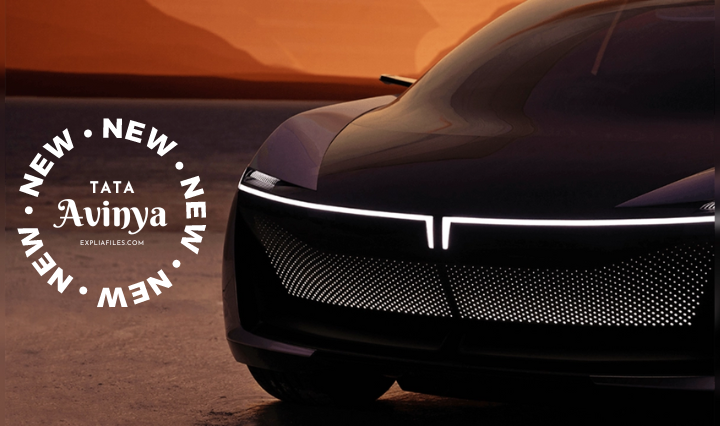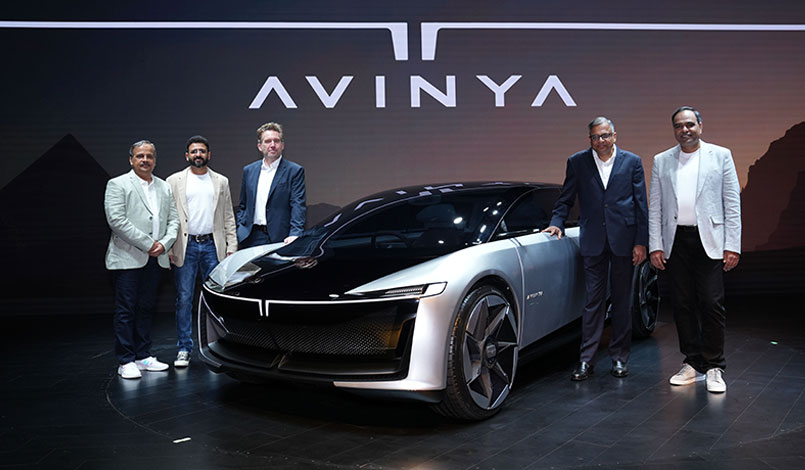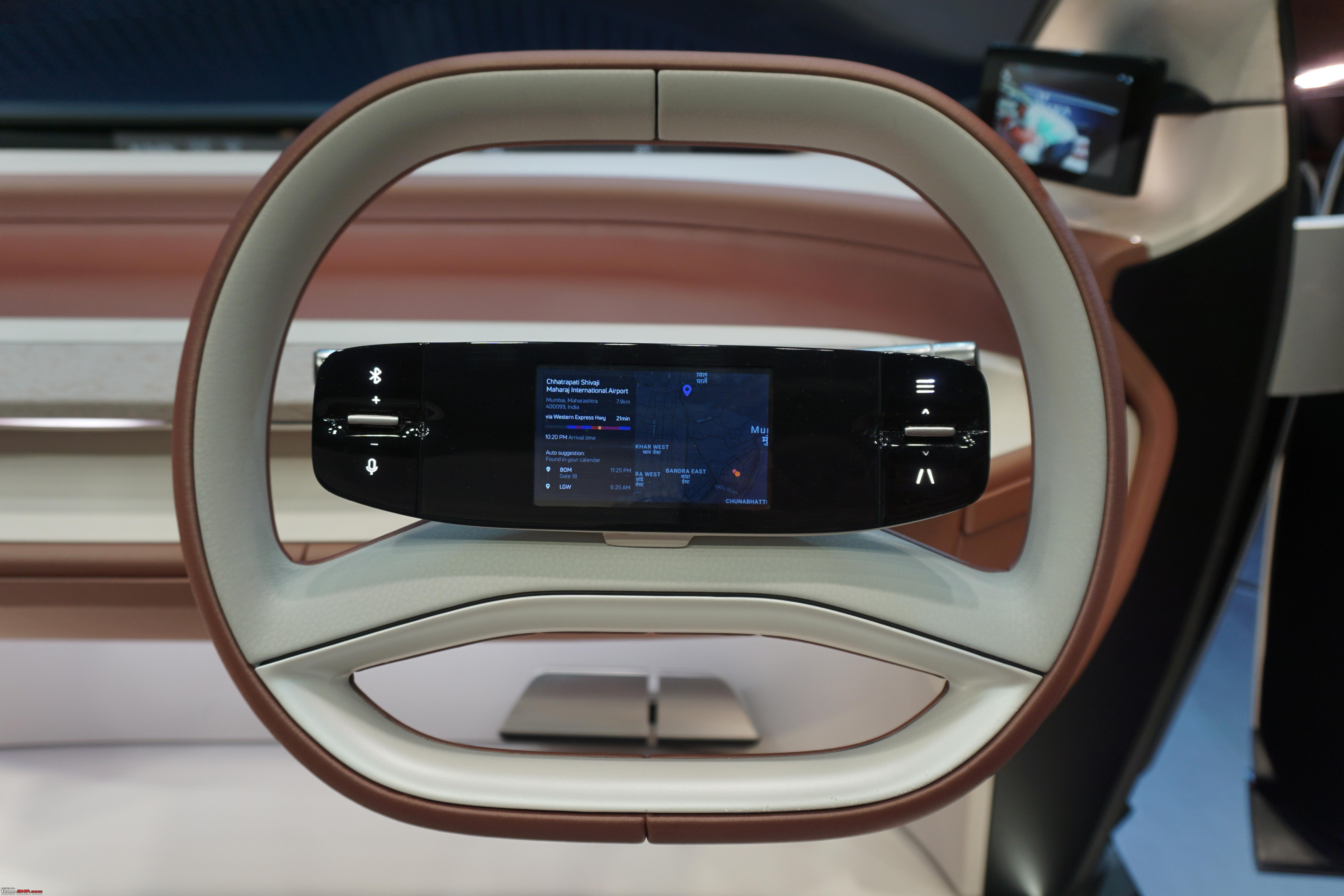Top Features of Tata Avinya That Driver Love

Tata Avinya is a SUV which is expected to launch in India in Jun 2025 in the expected price range of Rs. 30.00 – 60.00 Lakh.
Read more about Tata Curvv.

Tata Motors took the wraps off the Tata Avinya electric concept, based on its brand new third-generation Pure EV architecture. Tata Avinya showcases the future of Tata design, both in terms of the exterior and the interior, with a new focus on lifestyle. This new platform has been designed to be flexible and it will underpin a range of future Tata EV products.

Significance of the Name ‘Tata Avinya’
The word ‘Avinya’ in Sanskrit stands for innovation and Tata Motors definitely hasn’t held again on that in relation to the layout of the Tata Avinya Concept. The Tata Avinya is a top instance of a automobile maker utilising the efficiencies of an electric powered powertrain, main to a totally futuristic layout. There is likewise a brand new DRL signature prematurely that is harking back to that at the Tata Concept Curvv that changed into showcased recently.
The pure EV platform is the third phase of the automaker’s electrification plans. Gen 1 offers a driving range of 250 km with Tigor EV on the XO platform and Nexon EV on the X1 platform. On the Gen 2, with a claimed driving range of 400 km, it will offer the electric SUV Curvv, which is scheduled to launch in 2024.
The advantage of the Gen 3 platform over Gen 2 is that unlike the latter, which will accommodate ICE powertrains, the former will be a dedicated EV platform. That allows for more flexibility in packaging. For instance, the Avinya concept measures 4.3 meters in length, but Tata hinted they are aiming to go bigger. So expect a variety of body styles for models under this platform. One can do a front-wheel drive, rear-wheel drive or Four-wheel drive.

Tata showcased the future of EVs through Tata Avinya concept!
All-wheel drive with this and such configurations can exist. Connectivity is also a high element on this platform and it meets all the safety regulations for autonomous driving.
The design was led by the team in Europe, and engineering work was done in India. Tata avinya’s interiors specifically grab eyeballs with its unique swiveling seat design, and the feature could also make it to the production version of the product. The new identity of the car is the front and rear of the wheel. The latest identity comes as a part of the DRL that is mainly a subtle nod to our commitment that increasing the quality of life and taking a great step towards the EV revolution. It is mainly the manifesto and emphasis on the Horizon and the Infinite possibilities in this Gen 3 electrification also offered.

Tata showcased the future of EVs through Tata Avinya concept!
According to Tata, the concept is a blend of utilities between a hatchback, an MPV and a crossover SUV, and the design might also remind you of that on a shooting brake. With a swooping front windscreen and A-pillar coupled with the greenhouse that also extends almost to the bonnet, it looks more like a one-box hatchback, something that is now possible with the rise of electric cars. Even the wheels are placed at the absolute corners of the car, maximizing the space inside and to accommodate more batteries on the floor.
The interior of tata avinya has a very minimalist and open-air design, maximizing the space as well as the feeling of space. The party trick has to be the butterfly doors which should make for very easy ingress and egress, coupled with the swiveling seats. The concept also features digital screens for the rearview cameras, instead of traditional ORVMs, and the dashboard includes a soundbar with voice activation technology.
The focus on lifestyle extends with interesting features such as the aroma diffuser inside the center console, which essentially acts like a scented candle to enhance the livability of the interior. In an age where a plethora of screens with complicated tech are taking up most of the cabin real estate in modern cars, it’s refreshing to see Tata keep things simple. In the Tata Avinya, aside from a sleek screen below the dashboard, and mirror camera displays, the main
Digital screen is on the steering wheel which controls all in-car functions via voice commands.

Tata Motors’ Three-Generation EV Platform
With eco-friendly being the trend everywhere, including in the automotive industry, Tata Motors will also be going ‘green’ by using sustainable materials for its Gen 3 models. Models under the Tata Avinya concept’s Gen 3 platform will benefit from the fact that they will boast advanced driver assists. While the specifics aren’t revealed, some common bits should include autonomous emergency braking, adaptive cruise control and lane-keep assist.
The automobiles under Gen 3 platform will underpin a selection of recent Tata EVs and Tata Motors claims that the structure could be a higher in shape for his or her destiny products, permitting the carmaker to take complete gain of the opportunities that electric powered powertrains represent. The largest hurdles for an EV are variety and charging time. Well, the Tata Avinya is showing some positive signs for models under the Gen 3 platform, as it will be capable of more than 500km of range.
The battery used in the Tata Avinya Concept will also be a beefed-up unit as compared to the existing electric products on sale and it will support ultra-fast charging, allowing you to pump up 500km worth of range in less than 30 minutes. Tata Motors expects to introduce production cars under this concept by 2025 and it really seems like an ambitious project for the company.
Of the Tata Avinya concept’s many interesting traits, one stands out as being particularly radical – the lack of touchscreens. Indeed, bucking the trend of larger, wider and all-encompassing touchscreens, the Tata Avinya has instead tiny screens around the cabin and none of them the focal point of the interior.
This is far from some oversight, rather, as Martin Uhlarik, head of Global Design at Tata Motors, says, it’s an ‘intentionally bold choice’ and a vision of what the company believes will be the future of interior automotive design.

The screen arms race
“It’s a screen arms race today, where will it end? Plus, if you look at human centric design, we are looking at so many screens in our lives and it’s not necessarily a good experience, you need the info, of course, but we want to provide it in a way that isn’t overbearing,” says Uhlarik.
Thus, there are screens and displays around the cabin, but placed at specific locations and for specific functions, for example, the ones on the doors for rear view, one on the steering wheel for car set-up functions, an HUD for critical driving info and a neat and very slim screen tucked away at the base of the windshield for other less important information.
It’s a bold approach; born EV cars like the Tesla have laptop-sized screens as the primary interface in a minimalistic cabin. Even models like the Kia Seltos and Mahindra XUV700 boast of wide double panel screens that stretch halfway across the width of the dashboard and today’s consumers are lapping it all up.
However, Uhlarik believes consumer behavior will change very soon, illustrating using his own family. “I’m a button guy, my son who is 20 is a touchscreen guy and my daughter who is 13 is almost always using voice commands to operate her phone.”

Audio first
That, in essence, is what Uhlarik and his team believe will form the basis of future human-car interaction and the Tata Avinya is all geared up for this. At the front is a sound bar that stretches across the minimalistic dashboard and each seat also has speakers built into the headrest area. There are also multiple microphones around the cabin to pickup and recognize occupants’ voices. Thus, with a multiple mic and speaker set-up, the car can provide a focused and accurate audio interaction with each of its occupants.
While this may seem radical to some, it isn’t as far out as you’d imagine. Yes, touchscreens are certainly a logical and very familiar interface, but, as Uhlarik puts it, “That’s today, in future, voice will play a much larger role. If you look, voice interfaces are growing all around us and the technology is rapidly improving.”
As familiarity with digital assistants grows and their own capability improves and becomes more intuitive and natural, human-machine voice interactions will only advance. Carmakers are clearly aware of this and many are integrating voice commands and even popular digital assistants like Google and Alexa onboard.

Sound Advice
As of now though, these form supplementary functions in what is pretty much a touchscreen-centric environment. By going voice-first, Tata Motors is clearly trying to lead the change in what it believes will be the future and the Indian carmaker certainly has a good track record of looking ahead.
For instance, while others still believe the EV market to be not ready for mass adoption, Tata Avinya bet otherwise and rushed affordable electric vehicles that are hot sellers today.
In any case, the production version of Tata’s gen 3 EV is still three years out – a lifetime in the tech world – by then ‘voice’ could easily be the new ‘touch’ and with that playing out, Tata Motors’ bold vision could pay off big time.






Thank you for your sharing. I am worried that I lack creative ideas. It is your article that makes me full of hope. Thank you. But, I have a question, can you help me?